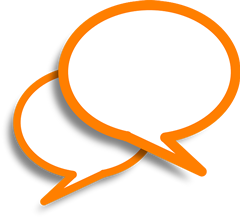 Active listening is one of the best techniques we can use to communicate well with others and avoid misunderstandings. The principles of active listening include the following:
Active listening is one of the best techniques we can use to communicate well with others and avoid misunderstandings. The principles of active listening include the following:
1. Truly pay attention to the speaker. Don’t let your mind or attention wander. If you have too much on your mind at the time, and the conversation is an important one, ask the other person if you can reschedule the conversation for another time. If that’s not possible, take a quick break to get a drink of water or visit the restroom and re-group so you can clear your mind and focus on the conversation at hand.
2. Use appropriate body language to let them know you’re listening. Nod your head, smile, frown, or make other appropriate gestures. Respond with a “Yes” or “I see” from time to time to let them know you heard what they said. Make appropriate eye contact, but don’t engage in a staring contest; also, be sensitive to cultural differences (the rules are so different for various cultures that if you intend to have extended interaction with people of a particular culture, you should consult expert sources for their cultural norms. As a general rule, try not to hold eye contact too long with any culture, or you may make the other person uncomfortable).
3. Reflect their main thoughts and ideas back to them. You can rephrase (“If I’m understanding this correctly…”). You may also ask questions to gain more clarity or deeper understanding (“Please tell me more about…” or “I’m not sure I understand what you mean.”).
4. Refrain from interrupting them. It wastes time, often distracts them and causes them to lose their focus, and could show disrespect by not allowing them to finish their thoughts before interjecting your own.
5. Respond honestly and openly, ensuring respect flows both ways.
Now that we’ve “mastered” active listening, here’s another concept I recently discovered that takes effective listening to a whole new level. It’s called “flexible listening.”
The guidelines for flexible listening ask us to go deeper in our attention to the other person, to listen beyond the words to the emotions and feelings behind them. With flexible listening, we become more observant in order to pay closer attention to tone of voice, eye contact and body language, as well as the words the other person is saying.
For example, when you are approaching a subject that is sensitive for someone, an observant person will usually notice a shift in their comfort level with that topic. They may shift their eye contact, their voice may get softer (or louder, if the topic angers them), their gestures change and may reflect more nervous habits, such as clasping their hands, raising their shoulders, or becoming more rigid in their stance. When we notice these things, it’s a clear signal that the person is uncomfortable discussing that topic and you should tactfully steer the conversation to another topic that is more comfortable for them.
On the other hand, if someone is anxious to continue a conversation, they will often smile, lean forward, talk faster, and eagerly participate in the conversation. This is an indication that they are interested in, and probably excited by, the topic and you should continue engaging in it.
These tips help us be more human, compassionate and relatable, whether we’re talking with co-workers, customers or even family and friends.
Try active listening and then notch it up to flexible listening and watch the effectiveness of your communications, and its related impact on your relationships, soar!

